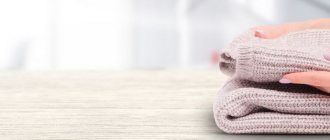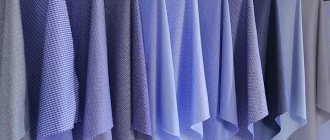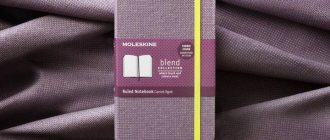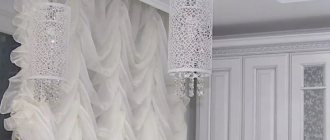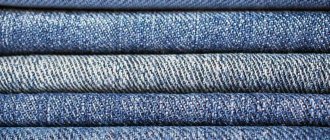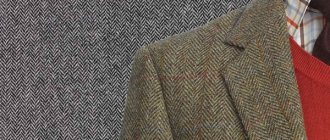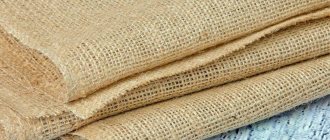What is spandex
Initially appeared in the United States as a replacement for rubber. Later, the material began to be introduced at manufacturing enterprises in Europe and Asia; in Russia it became known in 1975, thanks to the work of. Spandex - what kind of fabric, what other names can you find?
- Spandex is a common American term.
- Elastane is a synonym that is more often used in Europe.
- Neolan is a characteristic Japanese name.
- Vorin is a term from Italy.
- Lycra and vairin - in some industries.
The history of spandex
In 1959, spandex was discovered in the USA in one of the American laboratories. Spandex literally translates from English as “stretch.” Due to its elasticity, this fabric has become very popular and incredibly in demand.
During World War II, thanks to scientific research, there were attempts to develop this fabric as a good analogue to rubber. It was expensive and was used, as a rule, for the manufacture of various military equipment. German researcher Bayer is one of the first to discover the technology for making synthetic material.
In the mid-20th century, he was able to combine existing chemicals and produce the first strands of spandex. In 1952, Bayer registered a patent for his technology for the production of spandex; a little later, an American laboratory was able to successfully complete the endeavors of the German scientist by combining synthetic materials and calling it lycra. Ten years later, the fabric is distributed throughout the world and is considered one of the best-selling synthetic fibers, using a unique dry spinning technique to transform the polymer into a man-made fiber.
At the very beginning, spandex was white, after which the material attracted the attention of buyers and for external aesthetics it was treated with special paints - dyes, usually dispersed and acidic. It should be noted that in the second half of the 20th century, spandex was actively used for the production of lingerie and corsets. The latter was one of the integral parts of any woman’s wardrobe.
Currently, this fabric is used to make both men's and women's clothing. Various media personalities often appear on stage in spandex suits, thus giving even more popularity and promoting its spread. And this is no coincidence; spandex practically does not change its appearance and quality even over long periods of use; it is an incredibly practical fabric that is in great demand in the textile market. Today, many things are made from spandex: clothing for sports and leisure, swimsuits, belts, as well as many other items and accessories.
An interesting fact is that in Europe and Asia they use the word elastane instead of spandex. More than 60 years later, the quality of this fabric has improved and, at the same time, the benefits of spandex have increased. Unique technologies, as well as the latest research, make it possible for manufacturers of synthetic threads to produce high-quality and durable spandex, which will delight throughout its entire service life, while maintaining all its positive qualities.
Characteristics of spandex
The main property of matter is its ability to stretch. This helps things maintain their original appearance. A spandex dress is an excellent choice for slender girls; it will fit tightly and highlight your figure. The material combines strength and stretchability, softness and wear resistance. Many people think about the question: spandex - what kind of elastic fabric is it, what types does it come in? Classification by fiber type is provided:
- two-dimensional – stretches across width or length;
- four-dimensional - stretchable in all directions.
Compound
When studying the chemical structure, in order to answer the question, what kind of fabric is spandex, you need to point out that it is not a specific substance, but a group of polyurethane materials. They are based on nylon, acetate and other types of polymer compounds. Since spandex is 85 percent polyurethane, the fibers are rarely used in their pure form; they are more often added to natural or synthetic fabrics. Manufacturers produce elastane through chemical processes.
Advantages and disadvantages
Spandex fabric has a unique elasticity that helps the fabric quickly return to its original appearance. It also has the following advantages:
- Spandex items are soft to the touch;
- does not absorb moisture and fits tightly to the skin, which is why it is suitable for sewing swimsuits;
- a feature is excellent strength - 1.3 g/cm2;
- easy to dye, so fabrics with spandex can be used to create a bright concert look;
- does not wrinkle, is lightweight, the material is thin, so it is convenient to store clothes.
At the same time, elastane is sensitive to light, as a result of which the color fades over time, so even a high-quality swimsuit under the bright rays of the sun will not last longer than two seasons. Other disadvantages include:
- requires careful care, the material is sensitive to high temperatures;
- items made of spandex must be worn carefully, because the fabric is prone to forming puffs, for example, tights;
- tailoring requires special skills.
Characteristics and composition
Created from a combination of diisocyanate and polyglycol, the synthetic polymer spandex is a product of melting the raw material.
Amazing plasticity
Spandex can stretch 5 to 7 times its original size. The material can be stretched repeatedly, while the fabric structure is not subject to deformation.
Shrinkage, weaving and dyeability
If you follow the washing regime, it is not subject to shrinkage, but if not correct, it can shrink by half. The finished item does not stain well when exposed to dyes: wine, juice and paints and varnishes. Weaving fibers is created in factories, but this process is difficult manually: the use of pins and threads can lead to deformation of the material.
Application of spandex
Elastane is used in the textile industry to improve the characteristics of finished fabrics. It is used in furniture production for upholstery of soft furnishings and sofas. Fabrics become the basis of stage looks, the most famous of which are the costumes of Power Rangers, Spider-Man, leggings, which were actively worn by musicians of the eighties, metal performers, and modern glam performers. In the production of medical and work gloves, adding elastane to the cuffs prevents the protective elements of clothing from falling off.
- Why pregnant women should not cut their hair
- Uterine fibroids: treatment with folk remedies
- Beef chops - recipes with photos. How to cook beef chops in the oven and in a frying pan
Spandex clothing
Elastane is used to sew clothes that will fit tightly to the figure. Making clothes from this material is relevant in the following cases:
- For the manufacture of swimwear, elastane has a high degree of hygroscopicity.
- Spandex material is used to create sportswear due to the fact that stretchy items do not hinder movement.
- Adding just 5% neolan to denim helps produce tight-fitting styles.
- It is used for sewing stockings, underwear and slips, because the thin stretch perfectly emphasizes the figure.
Fabrics with added spandex
Cotton is a natural fiber that allows the skin to breathe, but it does shrink, and the addition of elastane solves this issue. Spandex is also used in combination with other fibers:
- Linen with high hygienic properties does not stretch at all, and the quality of the finished products is affected by loss of shape. Lycra increases the elasticity of the fabric.
- Adding spandex to rayon adds strength that it lacks.
- Products made from knitwear with the addition of lycra retain their shape longer.
- Diving fabric, which includes spandex, is used for sewing sports and circus outfits, as such clothing stretches and absorbs moisture well.
- The combination of polyester, cotton and viscose is called micro-oil. This fabric does not wrinkle, it remains soft and light.
Spandex thread in knitwear
In the description of yarn you can often see the addition of elastane or lycra. This helps finished products retain their shape, and the material can be used to create any product, even knitted swimsuits. It is easier to work with threads of this composition due to slip. The addition of elastane significantly reduces the price of natural yarn due to its low cost.
Types of fabric
Synthetic material is often used in combination with natural and other synthetic fabrics.
- Polyester and spandex. The combined fabric has increased breathability and moderate thermal stability. When choosing white fabrics, they should be protected from sunlight to prevent yellow stains.
- Polyester/Acetate/Spandex. The combination of fabrics allows you to create a high-tech fiber that perfectly retains its shape and does not require careful care.
- Nylon/spandex. It has a higher density than a combination of polyester and spandex.
- Two-dimensional and four-dimensional spandex. The first type of spandex stretches in one direction, the second - in two.
Spandex is also applicable in knitted items made from natural fibers (linen and cotton): the durability of the product is significantly increased.
How to care
When buying items with Lycra, pay attention to the labels. Compliance with these care rules will extend the life of your clothing. Primary requirements:
- Hand washing of spandex products is carried out at a temperature not exceeding 40°C. Machine - must be designed for use on delicate fabrics.
- Do not use chlorine bleach.
- You need to iron things at a temperature of no more than 150 degrees, although many products do not require such a procedure, taking the shape of the body when worn.
- Do not use high temperatures to dry spandex products.
- Dry cleaning is not recommended because aggressive effects of the components are not allowed.
- Please note that fabric easily absorbs odors.
Care
Products containing elastic threads do not require complex care; first of all, you must follow the instructions on the clothing label and the composition of the main fabric itself. Washing is allowed by hand at a water temperature of up to 40 degrees, and machine washing on a mode for delicate fabrics. Chlorine-containing bleaches are prohibited. The main thing is to always remember that the polymer cannot withstand high temperatures.
- It is better to wash things by hand in lukewarm water. Detergents must be mild and do not contain chlorine.
- Products should be dried naturally, away from heating elements and avoiding direct sun.
- Elastic items do not need to be ironed; they straighten out on the body. If necessary, they can be ironed with a low-heat iron. First you should try the heat of the iron on a small area in an inconspicuous place.
- Natural fibers combined with spandex are ironed through gauze.
We recommend
Swimsuits always contain spandex (usually 20-25%); you can often see that in places of greatest tension the fabric becomes weak and translucent, especially if the swimsuit is used in pools with chlorinated water. The fact is that chlorine destroys elastic fibers. In order to extend the life of such products, it is necessary to rinse them after swimming in the pool under running water and then dry them.
You need to squeeze things out very carefully, do not twist them too much, so that the fibers do not burst. It is better to let the water drain and hang them to dry away from heat and sunlight.
The spandex industry is alive and growing. The material is constantly being improved and acquires improved characteristics. Elastane has firmly entered our everyday life, adding beauty and comfort to it. And the fact that today we watch with such pleasure the brilliant performances of athletes, and can also look spectacular on special occasions, is largely due to the merit of this incredible polymer.
© 2021 textiletrend.ru
Sewing features
The textile industry uses special equipment that helps to apply embroidery even on thin fabric. At home, it is important to follow these rules:
- The future seam should be marked with a special pencil or chalk in the areas of further stitching, because noticeable marks may remain from the pin.
- You should choose a needle for a special purpose: for knitwear or stretch fabric.
- For stitching, it is better to take an elastic thread, the skills of working with which also need to be worked out.
- Pre-test the seam on a piece to know how the product will behave. It is necessary to select the optimal stitch length to avoid further disappointments when working with workpieces.
Application area
Spandex has become an almost traditional material for the production of everyday clothing and rare types of garments: corsets, rocker trousers, superhero costumes and stage outfits for circus workers (mainly clowns).
Due to increased stretchability, furniture covers are also often made from this material.
Spandex wardrobe options:
- swimwear;
- sports items;
- dresses;
- slimming corrective underwear;
- socks and stockings;
- denim items.
Modern sports thermal underwear is also made of spandex, providing maximum contact with the body. The ability to allow air to pass through allows you to simultaneously get rid of excess heat and effectively remove moisture from the surface of clothing during perspiration.
However, in the absence of high mobility, heat-saving items are not recommended, since, unlike wool, they cannot accumulate heat for a long time (the fabric is not warm).
spandex fabric price
The cost of fabric depends on its type. The price range is 45-300 rubles. You can buy elastane on the online store website or in regular retail outlets. Spandex is sold by the meter. By purchasing canvas in a roll, you can save money.
| Fabric name | Price in Moscow, rubles |
| Nylon | 45-100 |
| Polyester | 70-100 |
| Nylon + polyester | 100-150 |
| Cotton + polyester | 160-200 |
| Polyester + viscose | 185-210 |
| Stretch jersey | 170-250 |
| Polyester + lace | 190-300 |
Application
- Spandex is common in sportswear: training suits, tights, leggings, swimsuits, performance outfits for gymnasts, figure skaters, and dance costumes.
- Spandex threads are woven into underwear, nightgowns, pajamas, and bathrobes.
- Elastic fibers are common in everyday and festive clothing: dresses, skirts, blouses, jeans, trousers, T-shirts.
- Spandex is added to theatrical costumes and sets.
- A popular thread is spandex, added to knitting yarn, used for sewing elastic-effect elements in clothing, and for creating costume jewelry.
Spandex in clothing - application
Spandex can be used in various types of clothing made from different and dissimilar fabrics. In its pure form it is practically absent; in most cases, only 2% of fibers are added to the composition. But there are clothes that require more of it - suits for cyclists and figure skaters, swimsuits.
Everyday clothing is also not complete without the use of technology. Stretch jeans fit tightly to the figure and can have a corrective effect. In addition to jeans, slimming underwear, which is also made from spandex fibers, improves your figure.
Evening dresses, fitted skirts, tights underneath – you can find spandex or its analogues everywhere.
Price issue
What is the price? There are many variations of fabrics with spandex, as well as the main characteristics; the price range depends on the type of fabric being combined, the manufacturer and the quality of the fabric itself. The estimated cost of common fabrics that contain spandex fibers can be presented as follows:
- nylon from $0.8 to $1.6 per m/p;
- polyester from 1.25 to 1.5 $ per m/p;
- nylon polyester from 1.5 to 2 $ per m/p;
- satin from 1.68 to 2.2 $ per m/p;
- cotton polyester from 1.8 to 2 $ per m/p;
- polyester viscose from 1.85 to 1.9 $ per m/p;
- poplin from 1.9 to 3.2 $ per m/p;
- stretch – jersey from 2.5 to 3.8 $ per m/p;
- cotton from $2.52 to $3 per m/p;
- polyester lace from 3.3 to 4 $ per m/p;
- knitwear from 4 to 4.3 $ per m/p.
The use of elastic characteristics of fabrics with the addition of spandex is invaluable when sewing a wide variety of clothing: from underwear to uniforms. Such clothing has gained great popularity in the theater and circus environment, where an indispensable condition for work is the spectacular appearance and functionality of the costume.
Application in the sports field is just as wide: the fabric quickly absorbs moisture, is not afraid of stretching, salt water (as well as sweat), can withstand loads well and does not sag or wrinkle.
The use of special tights made from a combination of polyurethane and elastane promotes rapid weight loss in problem areas, and in the manufacture of thermal underwear the same elastane is actively used in combination with natural ingredients: cotton and wool.
Combination with other fibers
The use of spandex threads in combination with other fibers helps the materials acquire new properties.
Cotton
Cotton is considered the best material for underwear, as it helps the skin breathe, absorbs moisture, and is hypoallergenic. However, cotton fabric wrinkles, is inelastic and can shrink. When adding even a few percent of spandex to the composition, cotton does not lose its basic properties. On the contrary, the canvas becomes more plastic without losing its shape. Things are made more tight-fitting and last a long time.
Linen
It is considered the best fabric in relation to the body. It is not hot in summer, but not cold in winter either. The fabric breathes and allows moisture to pass through well. Since linen is completely inelastic, it wrinkles a lot. To reduce this indicator, spandex threads are added to flax fibers. After this, the fabric practically does not wrinkle, but retains its original qualities.
Viscose
Viscose, made from wood cellulose, is soft and hygroscopic. The material is very pleasant to the skin, however, it is too fragile, as it tears easily. Thanks to the spandex added to the composition, viscose has the necessary strength.
Polyester
Polyester is used in the weaving industry only in combination with other materials, as it is absolutely not suitable for wear on human skin. Polyester mixed with cotton or viscose becomes more comfortable to wear, however, it remains completely inelastic. The slight addition of spandex to the fibers helps increase the ductility of the fabric.
Lycra
Lycra is a fabric based on spandex fibers. Unlike pure material, lycra has a more matte surface.
Satin
By adding spandex to satin, the material becomes durable, but at the same time soft and airy.
Nylon
Nylon itself is a very durable and dense material, devoid of elasticity. Adding fibers to the composition gives the fabric the necessary ductility and wrinkle resistance.
Types of spandex
According to the main classification, spandex is divided into 2 types:
- two-dimensional, which stretches either horizontally or vertically;
- four-dimensional, which stretches in all directions.
Both types are used for the production of various materials based on natural and synthetic threads.
Description and properties
Let's take a closer look at what kind of fabric this is. Main characteristics of spandex:
- elasticity (stretch 500 -700%);
- light weight;
- chemical resistance;
- wear resistance;
- good coloring;
- strength.
The natural color of the fiber is white. But a good degree of dyeing allows you to give the most unexpected shade, for which such fabric is in high demand when sewing theatrical stage costumes, circus uniforms and in cases where a bright and unexpected image would be most welcome.
Disadvantages of spandex:
- low hygroscopicity;
- light and heat sensitivity.
Elevated temperatures are very harmful to the structure of spandex fibers, so clothing care in rare cases allows washing temperatures above 40º C and ironing. In many cases, ironing such clothes simply does not make sense - the elastic characteristics of the fibers quickly restore their original shape and do not cause serious wrinkles in the fabric.
Dry cleaning can also damage the material; if the manufacturer allows the use of dry cleaning for this type of clothing, then in any case this is an extreme measure and not the usual cleaning method. The most serious disadvantage of spandex is its relatively rapid fading in the sun. Therefore, even the highest quality swimsuits will not last longer than two seasons, and colorful decorations are best displayed under artificial lighting.
In the production of the latest generation of fabrics, this problem has been partially solved and color fastness to ultraviolet rays has noticeably increased.
The most famous types of spandex are:
- 2D Spandex : Fibers stretch in two directions (length or width).
- Four-dimensional spandex : accordingly, stretching occurs in four directions at once (equally well along the length and width of the fabric used).
A little history
The invention appeared in 1959 thanks to Joseph Shivers, a chemist at the DuPont laboratory. The same company patented the first fabric made using spandex - lycra fabric. This fabric received its most famous use thanks to such inventions as tights and stockings, which are so necessary in every woman’s wardrobe. Adding only 2% spandex (or lycra) to nylon makes the fabric much stronger and more elastic. A characteristic shine also appears - the trump card of many manufacturers of hosiery products.
The second name for spandex is elastane. It is also an extremely popular additive in a wide variety of "bouncy" fabrics, making the fabrics much better.
The term “elastane” is more often used in Europe, while the term “spandex” is used in the USA and Canada.
There are many varieties of spandex-based fabrics; their distinguishing feature is high elasticity and wrinkle resistance. The applications of such characteristics are also very wide: from underwear to workwear and in any industry where the main requirement is significant stretchability of the fabric.
Properties and characteristics
First of all, it is a highly stretchy material that fits tightly to the figure. Elasticity is achieved through a weave of threads not used in conventional fabrics. Some filaments are long and amorphous, while others are short and rigid. The first ones are wrapped around the second ones, thanks to this a piece of fabric can stretch 7 times! When the stretch is released, the material quickly recovers to its original condition, so even after wear it looks like new. To the touch it is a shiny and smooth material that is light in weight.
After adding spandex to fabrics, they acquire new properties:
- stretch strongly, and stretchability does not affect the density and strength of the fabric - it shrinks back to its original state in seconds;
- do not wrinkle - this is convenient for natural fabrics (cotton, linen);
- they become stronger - if you pull the fabric in different directions, it will not tear, but will only stretch and quickly return;
- it looks more elegant - it shines and beautifully fits the figure, like expensive fabric;
- does not hinder movement, spandex is added to the fabrics from which tracksuits and shapewear are made;
- slight hygroscopicity - in hot weather it will not be visible on spandex products that a person is sweating, since the material does not absorb sweat and does not get wet;
- can be added to both natural fabrics and synthetics;
- features of production and material allow the fibers to be dyed permanently so that the color does not fade and the item remains bright longer;
- things with spandex do not fray, so even after years they look like they were recently purchased;
- easy to care for, no special washing or ironing conditions required;
- does not add additional cost to fabrics.
This material also has disadvantages characteristic of synthetic fabrics:
- does not retain heat, being in a cold room in such clothes will be uncomfortable;
- low hygroscopicity in the heat has the effect of sweating;
- it may fade in the sun if you hang it to dry in the open rays (you won’t be able to walk in spandex for so long in the sun, because it’s very hot);
- high temperature causes the fibers to shrink, causing the fabric to become stiff;
- small holes spread into arrows, like on tights; pulling one thread on the material is tantamount to losing the item;
- Shrinks if not washed correctly and may shrink by half the size.
Material characteristics
The invention of this fabric was very interesting. In the first half of the twentieth century, American textile workers received an order from the military: find an alternative to rubber . After a series of experiments, spandex was developed. The material turned out to be not only elastic, but also durable and comfortable. Therefore, from the mid-50s of the last century, clothes began to be made from it both for the army and for everyday needs.
Description of appearance
The natural color of the fabric is white . But in stores it is found not only in this form. Spandex is dyed in a variety of colors: from bright and acidic to pastel, muted.
This material is soft and smooth . It can be transparent or translucent, shiny or matte. It is almost impossible to find pure spandex in a store. Without the addition of other components (which will be discussed later), it resembles rubber.
Fabric structure
The material is based on polyurethane (it can be up to 85%) and various polymer compounds: nylon, acetate and others . When producing spandex, the raw materials are processed using chemicals. As a result of these actions, elastic polyurethane threads are obtained. They are added to knitwear, wool or cotton and many other fabrics.
Important! Even in small quantities, spandex can improve the performance of any material (2% is enough to see a huge difference). The majority of polymer fiber is found in wetsuits (up to 30% of the total fabric composition).
Properties of spandex
This material is an indispensable assistant in creating many things. It has very useful properties:
- Elasticity. The material stretches very well.
- Ease. It's not heavy at all. Therefore, it is often used in sewing sportswear.
- Wear resistance. With proper care, the item will last for many years.
- Capable of bright coloring. Clothes made from spandex are most often colorful and rich.
- Strength. This fabric is almost impossible to tear, even if you really want to. It will stretch, but will remain intact.
- Smoothness. The material is pleasant to the touch, the body feels comfortable in such clothes.
Advantages and disadvantages of the material
Spandex has excellent stretch, which allows you to create flattering outfits. In this case, the material returns to its previous form. Pros of the fabric:
- light;
- pleasant to the body;
- soft;
- does not wrinkle;
- resistant to sweat contamination and remains dry;
- durable;
- available for purchase;
- It lasts for a long time if you follow the rules of care.
Disadvantages of spandex:
- snags easily form on the surface;
- does not tolerate high temperatures when washing;
- fades, loses strength under ultraviolet rays;
- Sewing products requires special needles and skills.

